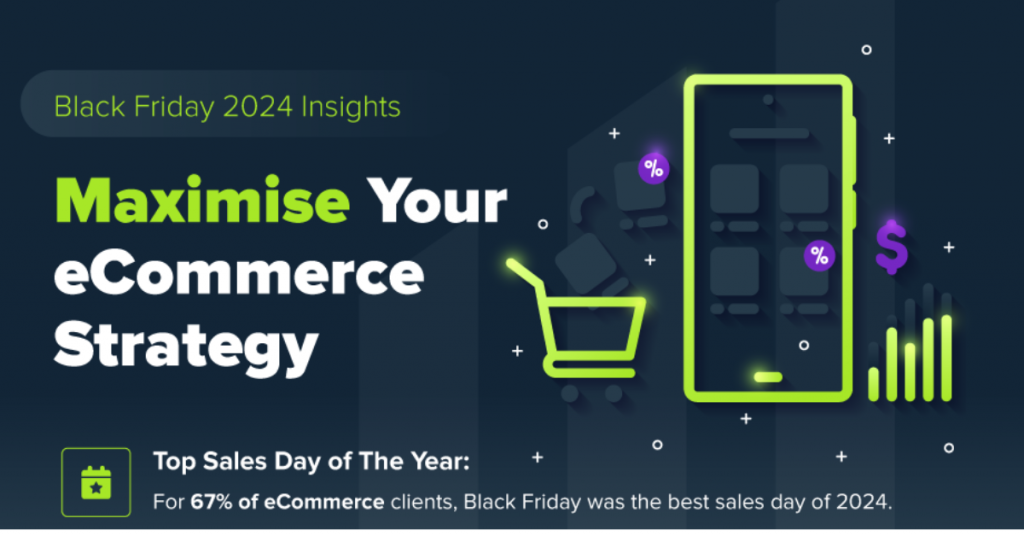What is a Buyer Persona?
Buyer Persona is a fictional character representing features of your customers.
It represents human face of customer:
- Motivations
- Habits
- Behavioral Patterns
- Doubts
- Aims.
Such representations make it easier to segment customers, design Buyer’s Journey and plan Lead Nurturing.

Interdisciplinary Methodology
Creating Buyer Persona requires combining knowledge and skills from various disciplines:
- Psychology,
- Marketing,
- Anthropology (including Digital Anthropolgy),
- Sociology,
- Analytics.
Aim?
To interpret data from analytics and research, to understand customers better and to create cohesive image of addressee of our actions.
What Buyer Persona is NOT
- Brand hero.
- Real, actual customer (remember – Buyer Persona is an abstract construct, extract or generalization of all your customer).
- Projection of marketer’s wishful thinking.
- Office mascot.
Original way: Function, stupid!
In this ebook we present our own recipe for creating Buyer Persona, different from common practices. Contrary to many others, we don’t believe in:
- Personas creators and templates.
- Giving Personas faces and names.
- Creating plastic representations of Personas (or in hanging them in office).
- Devoting too much time for developing Personas.
- Establishing emotional bonds with Personas, talking to them, etc.
We are pragmatic. Function is the key, and Persona just serves sales. For us the most important moment of working with Persona is not creating it, but actual use in marketing and sales actions. Last part of that ebook is devoted to practical implementation of Persona.
Use of Persona
Understandable representation of data:
Buyer Persona is created when we want to translate abstract numbers, data and information to more understandable form – an image one can refer to, use it. Such image embodies data, stimulates imagination, helps transfer data into action.
Empathy:
Persona allows for better understanding of customers, because it involves translating data and analysis into experiences, habits and emotions.
Seeing obstacles on buyer’s journey:
When creating Buyer Persona you discover customer’s inhibitions, doubts and problems. Such valuable knowledge helps anticipate possible criticism and address difficulties as early as possible.
Improving company’s internal communication:
Thanks to Buyer Persona all departments share cohesive vision of customer’s need, values, doubts and communication.
Secures coherence:
Marketers, salespeople and customer service are tempted to imagine and profile customer according to their current situation. Buyer Persona prevents it by delivering stable point of reference. Each new idea for campaign or product can be confronted with that image and verified: does new project reflect who we address our services to?
Optimizes advertising costs:
Because of precise targeting you don’t waste money on recipients who wouldn’t buy your product anyway.
Enriches analytics:
Data tell us WHAT happens, while when creating Personas we attempt to find out WHY and HOW our customers do so.
Shows directions of development:
Knowing our customers better we can predict what more might they need in the future.
Better personalization:
Personas provide plenty of inspiration in terms of channels, forms and content of personalized communication.
Rules of scoring:
Richer knowledge on how customer buys helps determine stages of buyer’s journey more precisely and adequately, and point out events which really mean new level in customer-brand relationship, therefore we can build more reliable and efficient scoring rules.
Effects: Buyer Persona in numbers
- Effectiveness of marketing actions on the website increases 2-5 Times.
- Email CTR increases by 14%.
- Targeted ads are at least twice more effective than non-targeted ones.
Case Study:
Skytap, IT solutions provider. Thanks to developing and implementing Buyer Persona they achieved:
- 210% increase in traffic (in total),
- 55% more traffic from organic search,
- 97% more leads acquired online.
Creating Buyer Persona – Methodology
When to create a Persona?
- At the stage of designing new product or service: when you want to determine your target,
- When you design communication strategy: and want to know what content and in which form your recipients prefer,
- When planning content marketing: what topics interest your readers? Which style, lenght and form would be most convenient for them?
- During work at concept of Lead Nurturing: you know what content does customer need at given point and how she/he prefers to consume it, what to include, how to divide educational material into bits.
Creating Personas in a constant, ongoing process, because your knowledge on customers changes and customers themselves change. Don’t treat Personas as one-time task. Try to revise Personas on regular basis (once in a month, once in three months, depending on your company’s development’s dynamics).
Where to get data from?
Methods available
Collecting data is actually about contact with customer or prospect. In order to talk to them, you can use the following tools:
- Interviews with customers or prospects (face to face in brick and mortar stores, or via Skype),
- Focus groups,
- Surveys,
- Ethnographic research (can be subcontracted),
- Website analytics (demographic data, interests, references, activity),
- Online behavior monitoring (behavioral and demographic data),
- Social media analytics,
- Data from contact forms,
- Information from salespeople or customer service department,
- Customer feedback on website and in social media (analyze also competitors’ website from that perspective).
When to invest in expensive methods?
- When your communication misses customers and fails. You either don’t know who your customer is or your vision is detached from reality.
- When you begin really innovative and costly project. Sometimes price of professional research is far smaller from cost of potential failure, not to mention invaluable insight you get.
Choosing your method. The more material, the better!
Choice of method depends on many factors, mostly on resources. The more methodologies you combine, the more material from various sources you combine, the more reliable your Persona will be.
Useful tools
For survey:
- SurveyMonkey,
- Google Forms,
- Skype,
- Instructions on conducting customer survey,
- System Marketing Automation.
To gather and represent results:
- Trello,
- Evernote,
- Google Docs.
Persona Creators and Templates
There are plenty of Persona creators and templates with questions and fields to be filled, sometimes they even include pictures you can add. You can use them, but in our opinion they are more of a limitation than of support. Why?
Questions must be yours
The point is that you have to come up with list of questions yourself (of course, possibly choosing from list and templates available, combining your own list from many sources). What aspect of customer experience, habits or personality are vital for your business? No pre-defined template will respond to your needs.
Also your answers should (and probably will) be more extensive than space provided by authors of the template. You can also have problems with including or needed materials or links to it, with making corrections, evaluating or reshaping your Persona. But if you still prefer to work on templates, we recommend you these two:
- Personapp,
- Buyer Persona Institute templates.
How Marketing Automation helps you build a Persona?
Why do you need Marketing Automation to build your Persona? Because it’s the most advanced tool for behavioral monitoring and analytics, building a complex picture of users’ Digital Body Language.
- Marketing Automation platform collects data from various channels,
- MA platform registers all interactions, therefore provides reliable data,
- It offers precise methods of online monitoring, such as Web Beacon (monitoring not only what user clicks, but also what s/he actually clicks),
- Offline tracking (thanks to beacons) allows to combine knowledge about online and offline shopping behaviors,
- Thanks to huge amount of data collected by system you can profile your questions for surveys or interviews more precisely,
- Offers possibility of segmenting recipients of your survey, so you can prepare it in a couple of versions (e.g. different for beginners and advanced users) and get more relevant results,
- Because it includes data from sales department, you have all the information about what actions were required to acquire a customer,
- You can also use transactional data from ERP, POS and CRM,
- Makes communication between sales and marketing departments more efficient and enables marketers to use salespeople’s expertise and experience,
- You can combine all the data in one platform – it guarantees order.
Archetype theory (optional)
Jungian archetypes
Some marketers use Jungian archetypes theory when building Personas in order to understand psychological mechanisms behind customers’ behavior better. That trend was introduced with „The Hero and the Outlaw. Building Extraordinary Brands Through the Power of Archetypes” by Margaret Mark and Carol S. Pearson.
Customer intuitively gets universal patterns
Jung claims that all people share collective unconsciousness with universal patterns of human experience encrypted in it. Therefore if a brand refers to that commonly understood models, customers will intuitively get them very fast and relate to them, because they have natural predispositions to that.
Archetypes are used mostly to building brand personality (assigning brand to certain archetype and shaping narrative accordingly, e.g. Benetton is an outlaw).
Classification of archetypes
Analogically we can assign our Personas to archetypes. It will provide some structure and pose more psychological questions. Your persona might be e.g.:
- The Sage:
motivated by desire to find the truth, with expert knowledge in the field, rational. - The Explorer:
brave non-conformist, risky and hungry for new experiences. - The Creator:
creative, emotional, independent and free.
Advantages:
- Clear outline of the Persona,
- Inspirations,
- In-depth reflection on customer psychology.
Disadvantages:
- Possibility of replacing data with archetype theory, making data fit archetype (it should be the other way round).
- Risk of wasting a lot of time for developing irrelevant aspects of Persona.
Creating Buyer Persona Step by Step
You know now what tools you will need, what Persona is and how to use it.
In the process of creating it we will try to establish:
- customer’s motivation and priorities,
- success indicators,
- possible obstacles or barriers preventing from closing the deal,
- buyer’s journey,
- decision criteria.
Below we prepared a list of questions useful when creating a Persona, for B2B and B2C. We hope that our list will inspire you: choose from our ideas, combine them with others, and add your own freely.
Essential questions are marked with a star*
Decide which questions are crucial for you right now. Prepare a list and learn how you will find your answers. Prepare surveys if necessary.
Revise Personas
Once a month or once in three months find some time to take a look at your Persona(s). Have you learned something new about them in that time? Maybe your experience has proven some of earlier hypothesis wrong? Or maybe your customer changed? Remember that Personas are dynamic construct. Revise them because otherwise they will lose relevance and become either useless or harmful.
Who is NOT my customer?
Asking yourself that question is a good way to start – you will know more precisely where to begin when you eliminate as many other options as possible. Also it comes at hand when you’re stuck and can’t get a grip of your persona – defining them negatively (who your customers certainly ARE NOT) unlocks your creative and analytical potential.
Important notes
Be specific. Try to answer questions as precisely as possible. Mark details and note the exact words your customers use.
Collect quotes. You Persona should be made of real words of customers and analytics.
Don’t force answers. If you don’t know something important about your customers, don’t feel compelled to fill in the blanks at all cost. If you have a hypothesis, write it there and mark as hypothesis. You can go back to that question later.
You can have more than 1 Persona. But Personas must be distinct, otherwise there is no point in creating many of them. Or maybe you haven’t been precise enough?
Primal customer. If you have more than 1 Persona, know which one is your primal, core, most important customer, on whom you want to focus.
How do I know that? Adding new feature to your Persona profile, note where do you know it from, in order to distinguish between solid knowledge from hypothesis.
Predict. Use Personas to indicating trends and predicting future needs of your customers.
Don’t overdo it. Don’t waste time on developing to complex Persona (do you need to make up his bio to know how he spends money?). It’s easy to get overwhelmed with massive amount of irrelevant details. Sometimes working on Persona can be an excuse for not taking real actions to communicate with actual customers.
Physical representation of your Persona
You should keep a record of all collected data which create your Persona. There is a couple of methods.
- Physical form.
Some marketers like to make physical representation of Persona as similar to real person as possible. So they add a photo of face, make a Persona puppet or figurine. Going that far isn’t necessary. - Document.
We recommend keeping Persona in form of a written description in text document, preferably one with online editing options (it will help you make corrections or build up new information). - Person in the office.
People do so in order to make all employees remember about final addressee of their efforts. However it might lead to oversimplifying the Persona or infantilizing it, what turns it into nothing more that an empty requisite or a mascot without real function. - Face of the customer.
Others give Persona face of actual customer. Such practice also brings on risk of misconception. Persona is NOT your real customer – it’s just a set of conclusions drawn from analysis, research and survey. It’s a form of representing data.
Persona has to be clear and readable above all. Don’t try to overcomplicate it with unnecessary graphic or manual work. It will only make your work longer without providing any real value.
Frequently made mistakes
Wishful thinking:
giving up to unrealistic dreams, misadjusting Persona to one’s fantasies.
Unsupported hypothesis:
filling holes or blank spot between solid information (from analytics, research or survey) with pure speculation. When you have fragments of reliable knowledge and stitch them up with suppositions, assuming that you understanding customers already, you might fail completely (read our case study on the topic).
Methodological mistakes:
They might concern unfortunate, misleading or biased phrasing in survey (and other survey – creating missteps, like including too many questions) and interpretation of answers.
Focusing too much on Persona-creating and not enough at their function:
You develop Persona to understand your customers better and know how to communicate with them, not for sake of artwork.
Generalities:
Phrases like „Appreciates good quality and is willing to pay for it” or „Cares about health” mean nothing, because they are too general and too vague. Avoid them at any cost, because at the first sight they look like actual knowledge and might overshadow real, solid information.
Infantilization:
Although some experts recommend such practice, we strongly discourage you from giving Personas names, especially funny names (Spaghetti Samanta, Lazy Luke). Firstly, it makes your Persona a joke, not something that can be seriously used, secondly, it might harm your communication with customers. If you perceive them as ridiculous, your customer service might reflect that.
Building Persona based on 1 actual customer:
Persona is not 1 customer generalized, but inversely: large group extracted to 1 model.
Overloaded Persona:
consisting of many irrelevant features and information. Crucial knowledge about buying behavior is lost among speculation about list of his/her favorite books. Reduce Persona only to the data you actually need. Another version of that mistake is creating too many Personas.
When Persona doesn’t work
What could go wrong? – Problems you can face on your way to successful Persona.
Problem:
My Buyer Personas are far from my actual customers!
Solution:
If you happen to sometimes have customers different from your Personas, that’s totally fine and shouldn’t make you do any changes. But if it’s a massive process, it means that your Persona is unrealistic and should be corrected.
-> Make new Persona, according to your actual customers, and think about its relation to previous one.
Problem:
I create Persona, but can’t actually use them.
Solution:
Personas created without function in mind are useless.
-> Go back and create Persona once more, but before you start, ask yourself: how am I going to use it? It will help you find right questions.
Problem:
My Persona is out-of-date.
Solution:
It’s a natural sign of development.
-> Don’t panic. Just find out what happened: did your customers change? Why?
Buyer Persona– base for Marketing Automation actions
Highest form of personalization
End of mass marketing
Idea of Buyer Persona comes from belief that mass communication is over. Marketers need to target their campaigns precisely, starting with discovering who their customers actually are. The point is not to bombard as many people as possible with our message, but to spot ones who might be really interested in the product and focus on them, offering relevant and helpful content, without wasting money and energy on people who wouldn’t buy it anyway.
Use Persona
The very same idea brought Marketing Automation into being. And that’s the only tool allowing to functionalize Persona, actually use it. Otherwise it’s just a set of information.
After having created a Persona
Most instructions concerning Personas focus on how to create them. But the real work starts later! The most important stage of working with Persona is developing marketing campaigns based on it. We automate these actions: Persona provides conceptual framework for them. Below we describe some examples of implementing Personas in practice.
Scoring
What is scoring?
It’s an amount of points, given to each user by Marketing Automation system. Points can be given for actions like:
- Visit on the website,
- Downloading materials,
- Attending a webinar,
- Recommendation,
- Purchase,
- Talking to consultant,
- Activity in brand social media.
Scoring should reflect level of customer’s knowledge on the product and engagement with the brand. Numbers in which that level is expressed allow for automation. Therefore setting reliable rules of scoring (for what customers’ action how many points are assigned), reflecting actual shopping process, is a crucial marketer’s task.
Reliable rules
Use Persona to determine which events are vital for purchase. Take a look at your Persona’s triggers and inhibitions.
- Are social media important channel for him/ her? Do likes result in purchase?
- Does Persona conduct a research before purchase?
- How Persona react to contact with salesperson: does s/he like to talk or prefers to find knowledge independently?
Lead Nurturing
Education for Purchase
Lead Nurturing means preparing customer for purchase with education (building up knowledge, answering questions and doubt).
Efficiency of Lead Nurturing
According to Forrester Research, well prepared Lead Nurturing program increases lead conversion by 50%, decreasing cost of lead generation by 30% at the same time.
To build such a successful program, marketers must understand lead’s needs.
- What does he know about our product?
- What more should he know to make a decision?
- In what order knowledge should be delivered?
- In what form information should be delivered? Should we divide it into many smaller bites or rather offer in bigger parts?
- Which channels will be most suitable?
Tools
For implementing Lead Nurturing we need:
- Knowledge: educational content, prepared according to lead’s preferences,
- Marketing Automation platform, which will secure mechanics of the proces,
- Buyer Persona as a scheme of user’s educational needs, expectations and preferences.
How to use Persona in Lead Nurturing?
Aims of Lead Nurturing Tips
Keeping in touch with Lead
Aspects of Buyer Persona
How your customers make relationships: with brands, but also with others? To which values and experiences of everyday life should you refer?
Tips
Make bonds: use general information from your Persona to build relationship on what is important and relevant for customer. Adapt your style.
Use quotes: Use words and phrases your customers used in surveys or interviews. You’ll be talking about product in language of its real users. Maybe customers paid attention to some features you don’t discuss much?
Aims of Lead Nurturing Tips
Communicating the idea of the product
Aspects of Buyer Persona
How does Lead consume content? What form does he prefer? How much time does he devote to it daily? What topics are interesting for him? What doubts does he have?
Tips
Match content to user: Combine knowledge on lead’s preferences with knowledge on what must be communicated to convince lead to purchase.
Portions: Size matters. Know what size of content does your lead prefer.
Aims of Lead Nurturing Tips
Communication adjusted to actual state of customer’s knowledge
Aspects of Buyer Persona
What are his shopping habits? How much time passes before first contact and purchase?
Tips
Decision: When creating your Persona, pay attention to reconstructing decision process. It’s easier to do when you use Marketing Automation.
Aims of Lead Nurturing Tips
Indicating best moment for sale
Aspects of Buyer Persona
What triggers customer to purchase? In which situation does he often shop?
Tips
The Moment of Purchase: Use Persona to determine which factors indicate readiness to purchase and conditions under which it can happen.
Synergy of Automation and Content Marketing with use of Persona
Advantages of Content Marketing
Content Marketing is willingly used both in B2B (91% of companies use it) and B2C (86% creates content on regular basis).
Why?
- Generating organic traffic (we attract people already interested in the problem).
- Non-invasive, non-agressive method.
- Lower costs.
What your customer wants to read?
One of the most common content marketing mistakes is writing more for search engines and less for humans. But what your customers need? What do they want to read?
Content Automation
Persona helps you understand your customer, while Marketing Automation helps translate that knowledge into action.
- Indicating most interesting topics.
- Indicating most preferable form.
- Organizing content.
- Allowing to personalize content.
Thanks to use of Persona (with tag) we can e.g. make video more visible on the website for video-preferring user.
Case study: Bruynzeel
Company profile
Bruynzeel is a B2B company, delivering storage systems for archives, museum, libraries, academic and public institutions.
Personas
2 Personas were created:
- Facility manager,
- Architect.
Nationality of users was also taken into consideration, so 2 versions of each Persona was prepared (German and Dutch).
Content marketing
Marketers prepared map of content and designed a scheme of process of consuming knowledge, according to user’s behavior and doubts and questions asked by them frequently.
Marketing Automation
Marketing Automation tools were also applied. Marketers focused on automation of Lead Generation: personalized landing pages, dynamic contact forms, pop-ups and analytics. It delivered more knowledge on customers, their behavior and needs.
 Follow
Follow
















